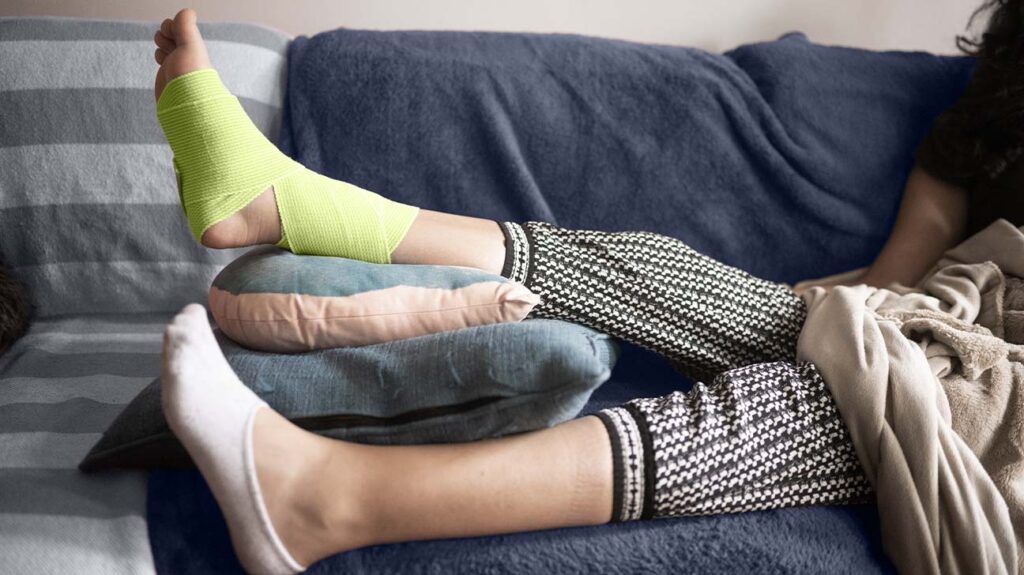Osteochondritis dissecans typically affects children and teens, but it can also occur in adults. It is a condition that commonly affects the knee joint, but it can affect any joint in the body.
When osteochondritis dissecans occurs, a small section of bone starts to separate from the surrounding area.
As this happens, a piece of bone and cartilage starts to loosen and break free.
This article reviews how common osteochondritis dissecans is in adults. It also looks at symptoms, causes, diagnosis, treatment, and more.

Osteochondritis dissecans occurs more often in young children and teenagers. In adults, it is less common, but it does still occur.
A
It also found that the condition affecting adults is more likely to occur in the ankle than the knee. In young children and teenagers, osteochondritis dissecans most commonly affects the knee.
Osteochondritis dissecans
Others may report occasional, mild pain in the joint.
In more severe cases, the fragment becomes loose. This can lead to more serious symptoms, such as:
- severe pain
- joint instability
- swelling
- loss of range of motion
- tenderness when a doctor examines the area
- locking of the joint
According to the National Organization for Rare Disorders, adults with osteochondritis dissecans have possibly lived with the condition for years with no symptoms.
The American Academy of Orthopaedic Surgeons (AAOS) notes that grown children and young adults often have more severe cases where the bone fragment detaches. Children who are still growing often heal on their own, but grown children and young adults may require surgical correction.
The exact underlying cause is not clear. It is likely that several different factors play into its development. Some theories
- repetitive microtrauma (small injury)
- genetic predisposition
- spontaneous avascular necrosis (lack of blood supply)
- inflammation
The AAOS notes that osteochondritis dissecans occurs due to a lack of blood supply. Other experts suggest that microtrauma is the more likely cause of osteochondritis dissecans.
To assist with reaching an accurate diagnosis, a doctor will likely review a person’s personal and family medical history and perform a physical examination. On examination, a doctor
- swelling
- tenderness when a person touches the area or moves the joint
- decreased or painful range of motion
A doctor will likely order an X-ray as a first-stage examination. This can help them identify the location of the lesion.
X-rays have limitations in what they can show. To confirm the diagnosis, a doctor may also order a magnetic resonance imaging (MRI) scan. They may order additional MRIs to check how a person responds to treatment.
Treatment varies on the basis of the severity of the condition in the affected joint.
In mild cases, a doctor may suggest resting from any strenuous activities or sports. They will then monitor the person’s progress to see if the symptoms improve.
A doctor may recommend splinting, casting, crutches, or other assistive devices to help promote rest.
In more severe cases, a doctor may recommend surgical correction. The AAOS suggests that adults are more likely than growing children to need surgery.
Surgery options
- replacement and grafting of cartilage
- drilling holes to promote new blood vessels and blood supply
- fixation use of pins or screws to secure the joint
The outlook for osteochondritis dissecans in adults can vary. People with stable lesions that require minimal intervention will typically heal on their own.
People who undergo surgery have varying success rates ranging from about
Teenage children who undergo surgery typically have better outcomes than adults. Children who are still growing may also have better outcomes and self-healing due to the likelihood that the bone and joint will repair itself.
Adults can get osteochondritis dissecans, but it is more common in children. Symptoms can range from no symptoms to severe.
Treatment can include conservative approaches such as rest and the use of devices to stabilize the joint. In severe cases, surgery may be necessary.
A person should consider contacting a doctor if they experience persistent pain in a joint, even if it is mild. A doctor can help assess the joint and provide treatment recommendations.
